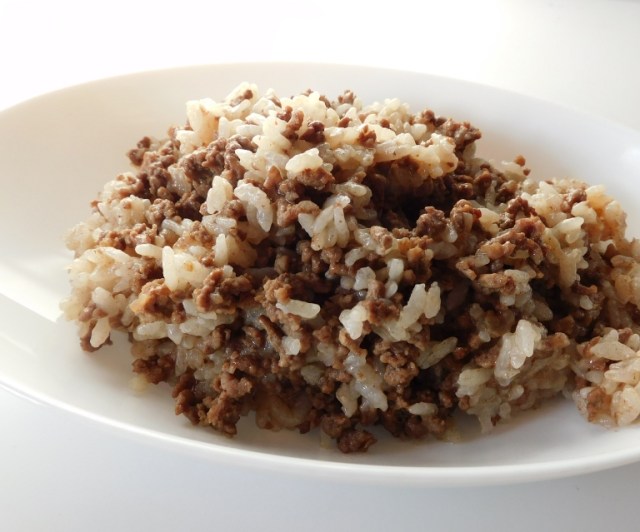
”It’s super easy and soaked with umami!”
So the other day, my Japanese coworker Seiji Nakazawa and I were discussing pita bread, as cultured individuals are apt to do. “They’re kind of messy to eat, but I really like kebab pita sandwiches,” he said, and I had to agree. “Yeah, they’re great aren’t they? I sometimes put hushwee in a pita and eat it like a sandwich too.”
Obviously, we were both technically supposed to be working at that time, and since there was no way of knowing when our boss was going to be back from whatever his latest crazy scheme was, we had to cut the conversation short. About half an hour later, though, I got a message from Seiji in my inbox asking “So what’s this hushwee stuff?” I thought about it for a second, trying to think if there was any similar kind of Japanese food, and figured the closest approximation was gyudon, or beef bowls, so I told him “You could kind of think of it as Lebanese-style gyudon.”
Now Seiji’s interest was piqued and his appetite stimulated, and before long I got another message from him. “So I’ve looking online for explanation in Japanese for how to make it, but I’m coming up empty,” he said. “Do you have a link?” I told him I didn’t…but what I did have was my family recipe.
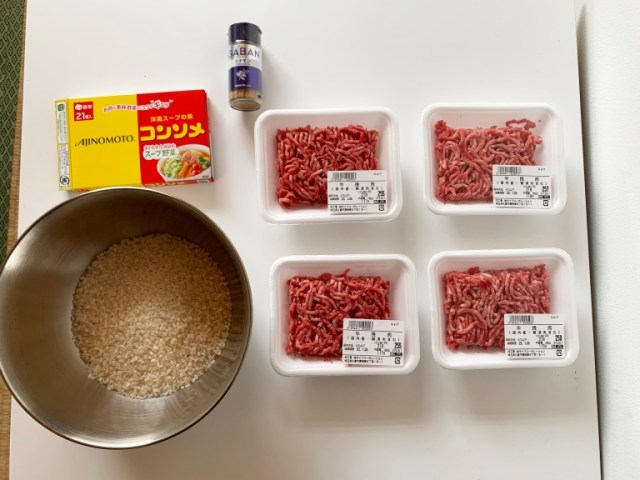
Ingredients
● Ground beef (450 grams [15.9 ounces])
● Rice (360 milliliters [12.2 ounces])
● Chicken broth (780 milliliters [26.4 ounces])
● Cinnamon (2.6 teaspoons)
 .
.
“Most of the ground meat at supermarkets in Japan is a mix of beef and pork, and sometimes they don’t have a lot of 100-percent beef packs. Is that OK?”
.
 .“Traditionally, it should all be beef, but if all you can get is the mix, it’ll do in a pinch.”
.“Traditionally, it should all be beef, but if all you can get is the mix, it’ll do in a pinch.”
.
 .
.
“How about the rice? Can I use Japanese rice?”
.
 .“Long-grain rice is the traditional way and works best, but yeah, if all you’ve got is Japanese short-grain rice, it’ll do. Different families make hushwee a little differently, so some variations won’t ruin the flavor.”
.“Long-grain rice is the traditional way and works best, but yeah, if all you’ve got is Japanese short-grain rice, it’ll do. Different families make hushwee a little differently, so some variations won’t ruin the flavor.”
.
 .
.
“And cinnamon? That much seems like a lot.”
.
 .
.
“Yep, gotta have the cinnamon. It’s not hushwee without it.”
.
 .
.
“OK, so what do I do with everything?”
.
 .“Brown the meat in a frying pan. You don’t need to use any oil, and draining the grease when you’re done is a good idea, especially if you’re using a beef/pork mix, since it’ll be oilier. Once that’s done, toss the meat into a cooking pot.”
.“Brown the meat in a frying pan. You don’t need to use any oil, and draining the grease when you’re done is a good idea, especially if you’re using a beef/pork mix, since it’ll be oilier. Once that’s done, toss the meat into a cooking pot.”
.
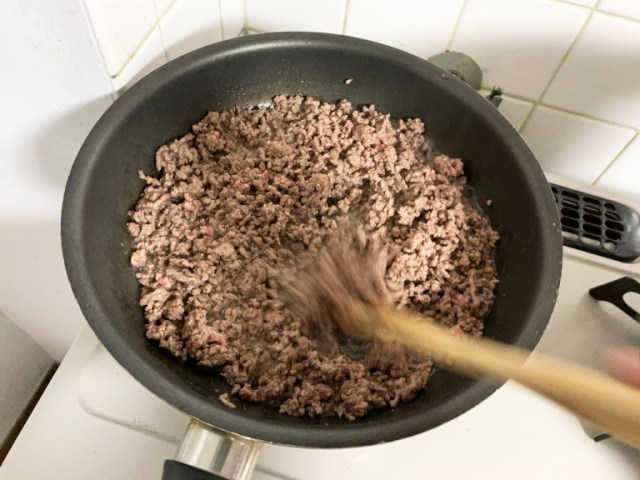
 .
.
“Gotcha.”
.
 .
.
“Next, toss the uncooked rice into the pot.”
.
 .
.
“OK. And the chicken broth?”
.
 .
.
“Into the pot. If you’re using consommé cubes, pour in the water here too.”
.
 .
.
“And the cinnamon?”
.
 .
.
“You guessed it – into the pot!”
.
 .
.
“And you’re sure about all that cinnamon?”
.
 .
.
“Positive. You can probably go up to three teaspoons, actually, but don’t use much more than that, or it might burn during cooking.”
.
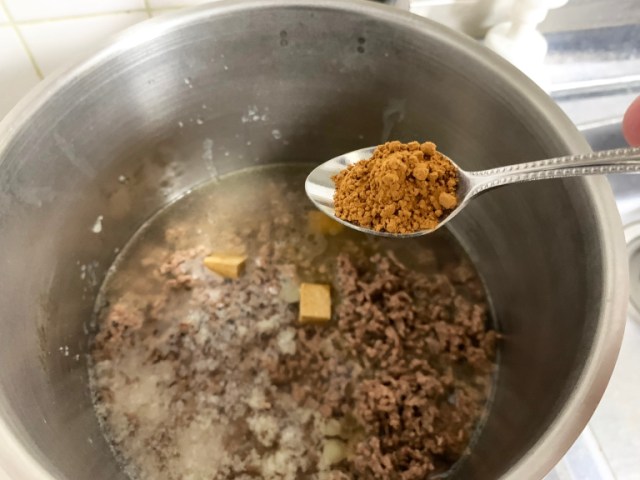
 .“Turn on the stove and bring the pot to a boil. Once it starts to boil, turn the flame down to low, leave the lid on, and let it cook until the liquid is gone. If you’re using short-grain rice and a beef/pork mix, you might want to give it a stir now and again, since those substitutions can make it a bit soggy and clumpy if you don’t move them around at all, but for the most part, you can leave the pot alone.”.
.“Turn on the stove and bring the pot to a boil. Once it starts to boil, turn the flame down to low, leave the lid on, and let it cook until the liquid is gone. If you’re using short-grain rice and a beef/pork mix, you might want to give it a stir now and again, since those substitutions can make it a bit soggy and clumpy if you don’t move them around at all, but for the most part, you can leave the pot alone.”.
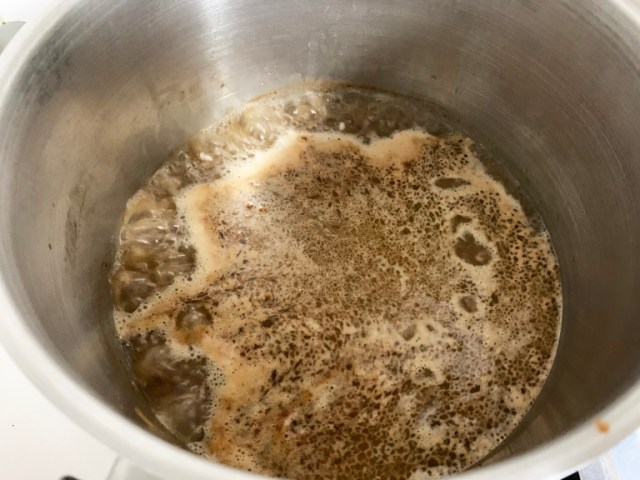
 .
.
“Ah, it’s kind of like making takikomigohan [Japanese stewed rice dishes]!”
.
And about 25 minutes later, Seiji was ready to eat!
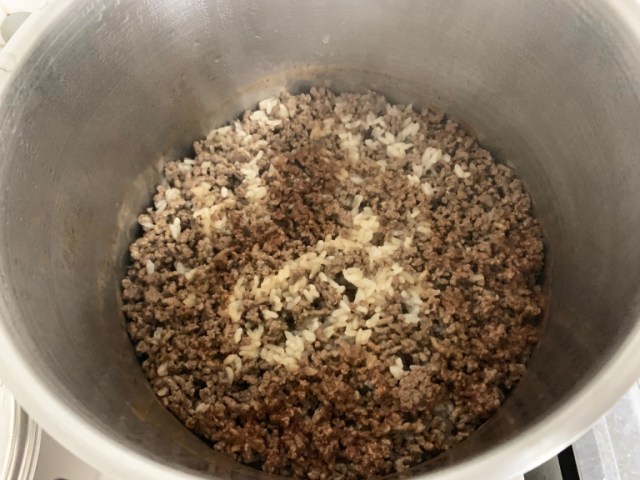
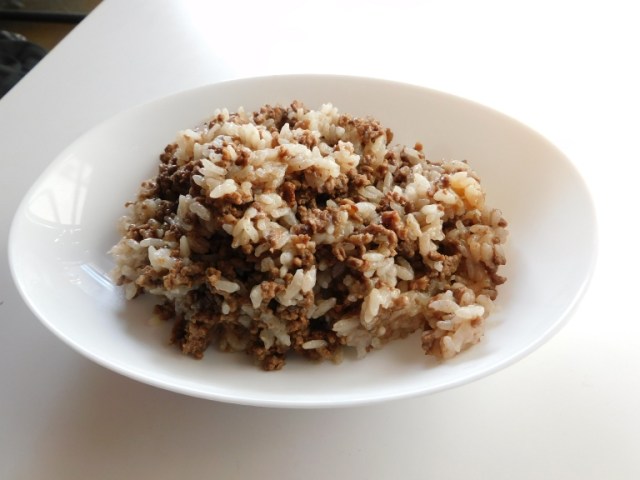
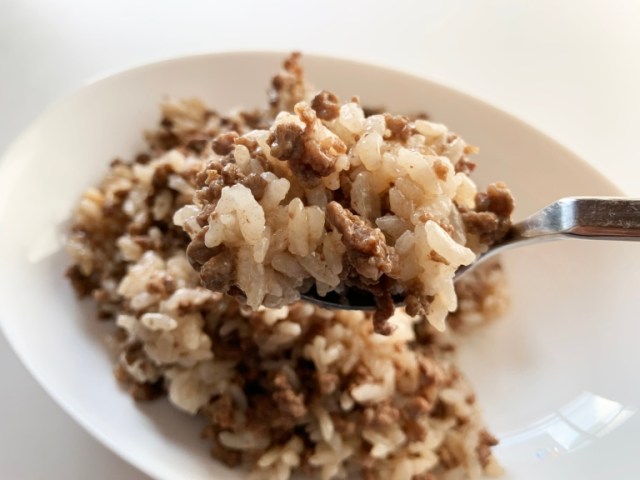
So what were Seiji’s impressions?
“The umami from the beef soaks all through the rice, and it reminded me of a meaty takikomigohan. But then when you go in for a bite, and the scent of the cinnamon drifts up and the spice hits your taste buds, it’s like ‘Ah, Lebanon!’ It was super easy to make, basically only two cooking steps, really delicious, and added some international atmosphere to my dinner table.”
Glad to be of help, Seiji, and it’s the least I can do to say thanks for the secret soba and phantom curry recommendations you’ve given us.
Photos © SoraNews24
● Want to hear about SoraNews24’s latest articles as soon as they’re published? Follow us on Facebook and Twitter!

No hay comentarios:
Publicar un comentario